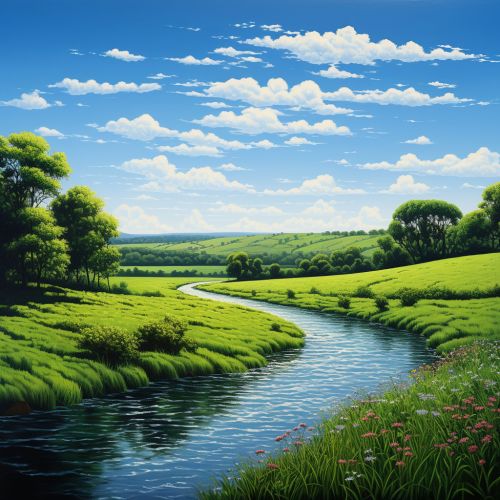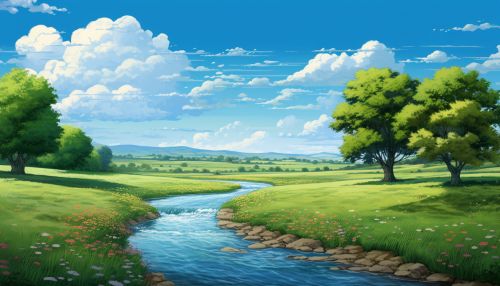River morphology
Introduction
River morphology refers to the shape and structure of a river system. It is a sub-discipline of geomorphology, the study of landforms and the processes that shape them. River morphology is concerned with the forms created by flowing water in the landscape over geological time scales. This includes the physical characteristics of a river such as its width, depth, velocity, and the patterns of its channels.
River Morphology and Geomorphology
River morphology is a branch of geomorphology, which is the scientific study of the origin and evolution of topographic and bathymetric features created by physical or chemical processes operating at or near the Earth's surface. Geomorphologists seek to understand why landscapes look the way they do, to understand landform history and dynamics and to predict changes through a combination of field observations, physical experiments, and numerical modeling.
Physical Characteristics of Rivers
The physical characteristics of rivers are largely determined by the water flow and the sediment load they carry. These characteristics include the river's width, depth, velocity, and the patterns of its channels. The river's width is the distance across the river from one bank to the other. The depth of a river is the distance from the surface of the water to the bottom of the river. The velocity of a river is the speed at which the water is flowing. The patterns of a river's channels are the shapes and arrangements of the waterways that make up the river system.


River Channel Patterns
River channels can exhibit a variety of patterns, including straight, meandering, braided, and anastomosing.
Straight Channels
Straight channels are relatively rare in nature but can be found in steep, narrow valleys and are often the product of human modification. They are characterized by a single, straight course and are typically associated with a strong, unidirectional current.
Meandering Channels
Meandering channels are characterized by a sinuous, winding course. They are formed when the faster, outer part of a river erodes the bank, while the slower, inner part deposits sediment, creating a bend. Over time, these bends can become more pronounced, leading to the formation of oxbow lakes.
Braided Channels
Braided channels are characterized by a network of river channels separated by small, often temporary, islands called braid bars. They are typically found in rivers with high sediment loads and variable water flow.
Anastomosing Channels
Anastomosing channels are characterized by a network of channels that split off and rejoin each other, giving a braided appearance. However, unlike braided channels, the islands in anastomosing channels are typically stable and often vegetated.
River Morphology and Ecosystems
The morphology of a river can greatly influence the ecosystems it supports. For example, the velocity of the water can determine what types of organisms can live in the river. Faster flowing rivers can support organisms that are adapted to strong currents, while slower rivers can support a wider variety of organisms. The depth of the river can also influence what types of organisms can live there. Deeper rivers can support larger, more diverse populations of fish and other aquatic organisms.
Human Impact on River Morphology
Human activities can greatly impact river morphology. For example, dam construction can alter the flow of a river, leading to changes in its width, depth, and velocity. This can in turn impact the ecosystems that the river supports. Deforestation can lead to increased sediment load in rivers, which can alter their channel patterns. Urbanization can also impact river morphology, as the increased runoff from paved surfaces can lead to increased water flow and erosion.
Conclusion
Understanding river morphology is crucial for managing our water resources and preserving the ecosystems that rivers support. By studying the physical characteristics and channel patterns of rivers, we can better predict how they will respond to changes in climate and human activity, and develop strategies to mitigate these impacts.
